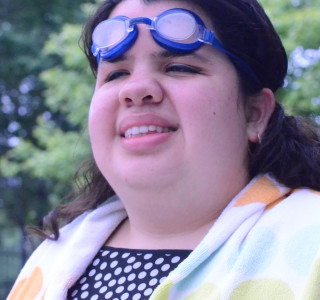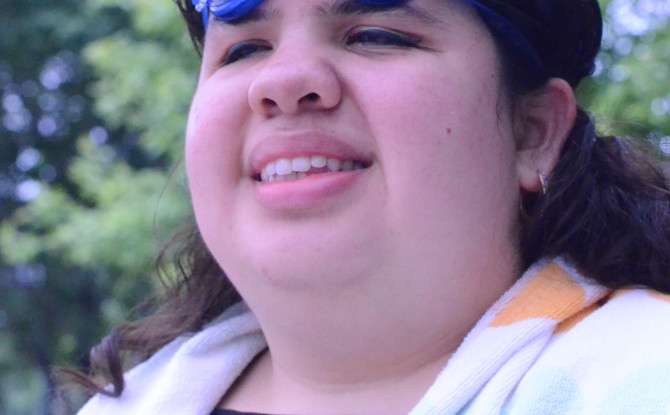
How Can People Who Are Blind or Visually Impaired Exercise?
June 18, 2015
“Swimming is a graduation requirement for all students, but I think we can make an exception for you.” Those were my high school counselor’s words when the topic of physical education came up. Although she had the best of intentions, this attitude demonstrated the common misconception that blind and visually impaired people cannot fully participate in physical activity. Nothing could be further from the truth, however. There are countless ways of exercising, and people with visual impairments should be physically active, just like non-disabled individuals.
Many persons with disabilities get little or no exercise, according to a recent study from the Centers for Disease Control and Prevention (CDC). Only about 50 percent of adults with disabilities who can engage in physical exercise are active. Of that group, 50 percent were more likely to report at least one chronic health condition than adults with disabilities that participate in physical activity. Chronic health conditions include diabetes, heart disease, stroke, etc. Furthermore, 82 percent of adults were more likely to be physically active if their doctor recommended it.
There are several barriers that often prevent people with vision loss from engaging in physical activities. They include:
- Lack of transportation
- Lack of motivation, energy or time
- Fear of getting hurt
- Financial hardship
- Lack of information to helpful resources
- Trouble learning new physical activities
Being blind or visually impaired doesn’t mean one has to live a sedentary life! There are countless activities people with vision loss can and do participate in. Some may require modifications or special equipment, while others can be done with minimal or no assistance or adaptation. The following is just a short list of the many physical activities people with vision loss can do:
- Walking and running
- Dancing
- Swimming
- Rock climbing
- Skiing
- Judo
- Yoga
- Bicycling
- Lifting weights
There are other sports specially designed for blind and visually impaired individuals, which we will discuss in full detail in future posts. These include beep baseball, beep kickball and goalball.
The following are a few tips and suggestions that can help.
The best and most important thing to do before starting any form of exercise is to ask your doctor first. He or she will advise on what’s best for you based on your current health and might even give you recommendations on how to exercise.
Everyone has different needs and preferences, so you should consider your particular situation before starting an exercise routine. Talk with a fitness instructor about your needs. He or she can help you set up an exercise plan and teach you the proper movements and techniques.
Research activities or exercises you are interested in. For example, if you or a loved one recently experienced vision loss and are unsure if you can resume your favorite sport or exercise, researching and finding out how other visually impaired individuals go about doing this activity can help.
If exercise equipment has dials or buttons, it can help to label these. You can make labels in Braille, large print or tactile markings.
Find motivation for starting and continuing your exercise routine. Things as simple as listening to music, an audio book or your favorite radio show can help you stay motivated while working out. They can also help make exercise fun and enjoyable!
We will continue discussing exercise and providing resources throughout the upcoming weeks. Summer is almost here, and what better way to enjoy it than by exercising!
Read more about the recent study done by the CDC and about other available resources for people with vision loss. Do you have any tips or suggestions for exercising as a person who is blind or visually impaired? Please share! You can also send any questions related to vision loss to sandysview@chicagolighthouse.org.
Thanks for reading!






